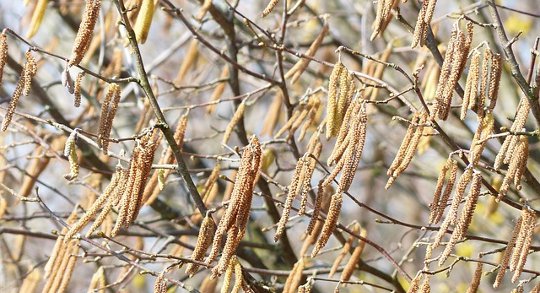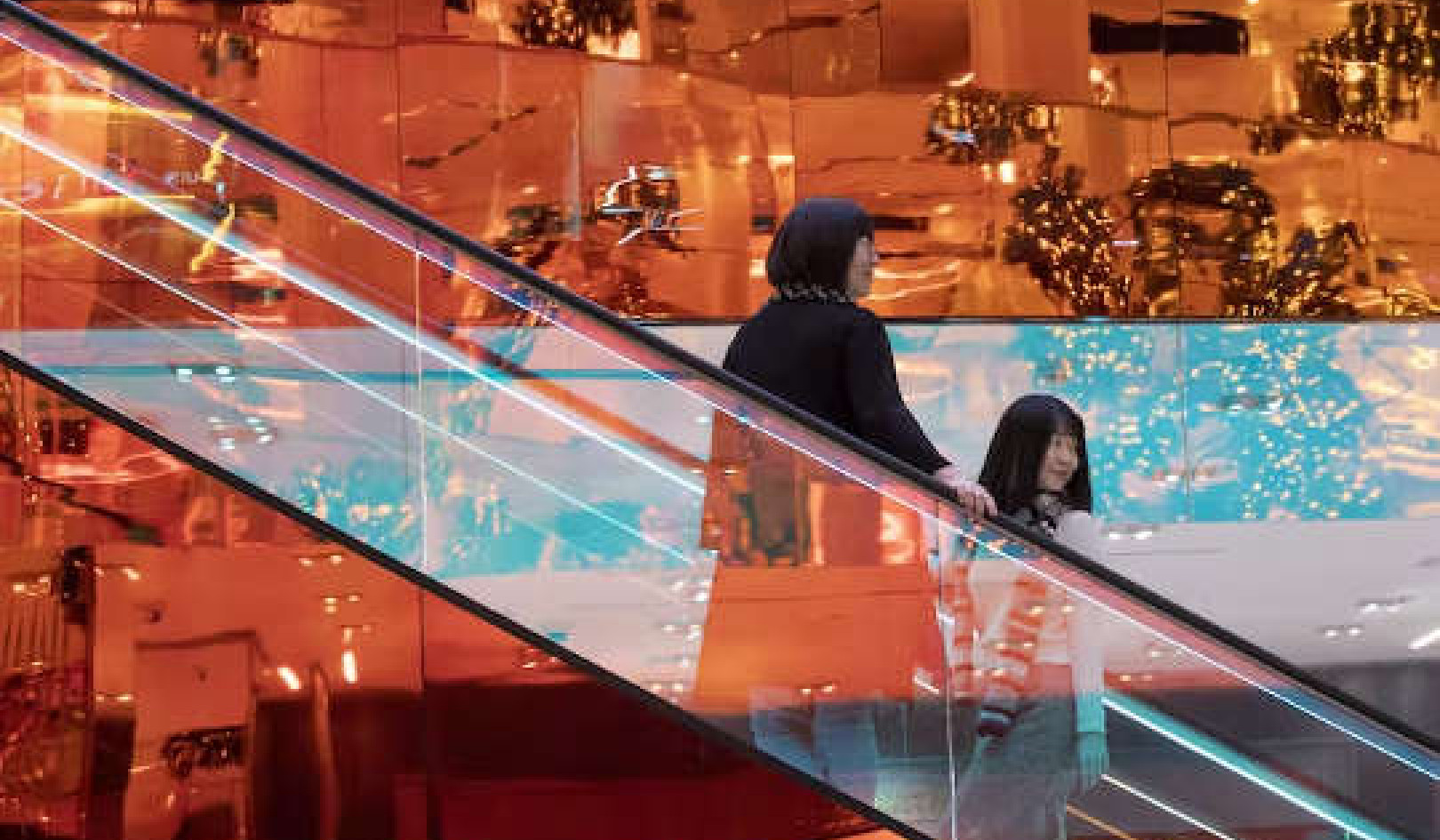
Before 1950 most of the billions of trees that made up the US urban forest were trees grown from seedlings. A great number of these trees, ash, box elders, many maples, ginkgo, aspens, poplars, cottonwoods, mulberries, pepper trees, junipers, willows, and other species, were dioecious, or separate-sexed, trees. Since these were mostly seedling grown trees about half of them would have been male and half female.
Starting in 1949 with the USDA Yearbook, TREES, an emphasis on planting male street trees was promoted, pushed because the males did not produce 'litter.' This 'litter-free' or 'seedless' trend became more and more common and today there are a good number of tree species where it is now almost impossible to find any grafted varieties for sale that are NOT male.
Around 1950 these separate-sexed trees were represented in urban areas with a ratio of approximately 50% female trees. These large female trees produced no pollen of their own and did not contribute at all to pollen allergy. What is often overlooked though, is that these same large urban female trees were also wonderful natural 'pollen traps.' In separate-sexed species the female flowers often have large clusters of pistils with broad, sticky stigmas that are positioned in the branches in such a way as to trap windborne pollen.
For catching and stopping airborne pollen of, for example, Red Cedar pollen, there is no organism in nature as perfectly designed for this job as a large female Red Cedar tree. For trapping and stopping airborne pollen of ANY species, the most efficient creation is the female of that species.
Not only did these billions of female trees produce no pollen themselves, they were also highly effective natural 'air-scrubbers,' or pollen removers. ( Stigmas of unisexual female flowers are electrically positive, +, and the airborne pollen grains are actually negative,-, thus the two are mutually attracted.)
An "Improvement" with Disastrous Results for Allergy Sufferers
Today's urban forests have very few of these large female trees left. As the old female trees died off naturally, or from harsh urban conditions, or as they were cut down because they produced 'litter,' they were usually replaced with male clones or with monoecious species that also produce large amounts of airborne pollens.
In a 1982 USDA booklet titled 'Genetic Improvement of Urban Trees,' a method was described whereby male-only trees could also be propagated from the monoecious species; thus we now not only have an over abundance of males from naturally separate-sexed species, but we additionally have many male trees from species that in nature never were unisexual.
In the year 1950, American Elm trees were the predominant street trees in thousands of neighborhoods across the United States and also in many other countries around the world. DED, or Dutch Elm Disease, swept across the land killing off literally billions of elms. Ulmus americana, the American Elm, is a tall stately vase-shaped deciduous tree that is perfect flowered. Elm flowers have both the male and female parts in the same flowers and are largely pollinated by insects, especially honeybees and butterflies.
As DED moved westward, killing off almost all the elms in its path, the dead elms were cut down and were replaced usually with unisexual flowered trees, the majority of which are wind-pollinated. Elm trees themselves do shed some limited amounts of airborne pollen, and allergy from elm pollen was not in the least bit rare. However, in most instances the replacement trees for the elms produced far greater amounts of airborne pollen. In many areas tree pollen makes up more than 70% of the total urban pollen load.
Disastrous Results for Humans as well as Bees and Butterflies
These wind-pollinated urban trees usually lack nectar sources in their flowers and thus, with the loss of the elms, not only did we get huge increases in ambient pollen, but at the same time countless numbers of urban bees and butterflies lost their major early spring food source.
Our urban forests are now heavily dominated by asexually propagated, wind-pollinated trees. Fifty years ago less than 5 percent of our population suffered from allergies. Today it is estimated that some 38% of the US population now has allergies. As the number of people with pollen-allergies grows, attitudes toward trees themselves are already changing. The honeybees and the butterflies, once so common, are themselves disappearing in many areas.
So What Are We To Do?
How can we clean up this bio-pollution and bring back the bees and the butterflies? The answer is actually quite simple. First, we need more diversity in our urban plantings. Never again should we over-rely on just a few species.
Second, we need to start planting as many non-polluting female-only, pollen-trapping trees and shrubs as possible.
Thirdly, we should also increase the planting of those perfect-flowered trees that are known to have especially low allergy potentials.
The bombardment of urban pollen, the resulting epidemics of allergy, and the terrible loss of biodiversity, all of these were avoidable, man-made problems. Now is the time to start getting back to the benevolent urban forests of yesteryear.
Article written by the author of:
 Allergy-Free Gardening: The Revolutionary Guide to Healthy Landscaping
Allergy-Free Gardening: The Revolutionary Guide to Healthy Landscaping
by Thomas Ogren.
Click here for more info and/or to order this book.
About The Author
 Thomas Ogren is the author of "Allergy-Free Gardening", published by Ten Speed Press. His two previous books are used by adult literacy programs throughout the United States, and are published by Sundown Press, and New Readers Press, Syracuse, New York. Tom's trademarked Ogren Plant Allergy Scale, the first plant-allergy scale in existence, is being used by the USDA to develop allergy rankings for all major US urban areas. To learn more about Thomas and his work, visit www.allergyfree-gardening.com
Thomas Ogren is the author of "Allergy-Free Gardening", published by Ten Speed Press. His two previous books are used by adult literacy programs throughout the United States, and are published by Sundown Press, and New Readers Press, Syracuse, New York. Tom's trademarked Ogren Plant Allergy Scale, the first plant-allergy scale in existence, is being used by the USDA to develop allergy rankings for all major US urban areas. To learn more about Thomas and his work, visit www.allergyfree-gardening.com
























